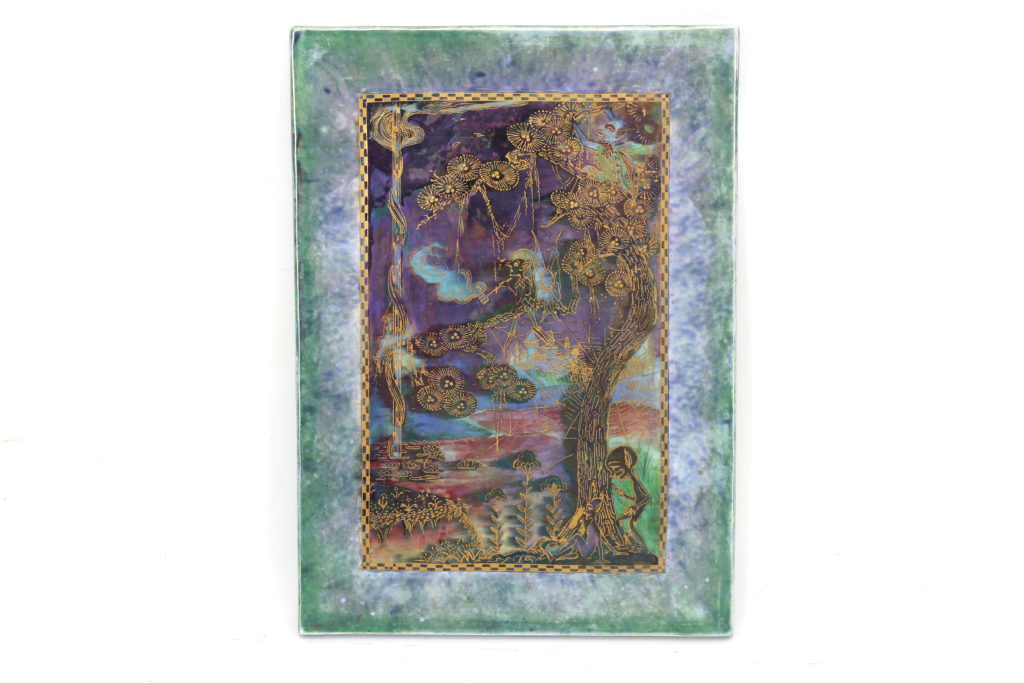Exploring Fairyland: The Enduring Appeal of Wedgwood Lustreware
While some may believe that lustreware has faded from fashion, the finest examples continue to captivate collectors and decorators alike. Among the most iconic and sought-after is Wedgwood's Fairyland Lustre, designed by Daisy Makeig-Jones in the early 20th century.
Wedgwood’s Fairyland Lustre blends fantastical imagery with exceptional craftsmanship. Patterns such as ‘Elves in a Pine Tree’ represent the very best of this rare and imaginative ceramic tradition. Vividly coloured and finely detailed, these pieces retain their magic even after more than a century. They are not just decorative objects but works of art that reflect a unique moment in British design history.

The Origins of Lustreware
The technique of lustre decoration dates back over a thousand years. First developed for glass in the Near East during the first millennium AD, it was later adapted for use on pottery in the 9th century. With precious metals such as gold and silver forbidden for table use in many Islamic societies, lustreware offered a shimmering and elegant alternative.
By the medieval period, the technique had spread across the Islamic world and into Europe. In Spain and Italy, it flourished with celebrated Hispano-Moresque and Italian maiolica wares. England joined the lustre tradition at the turn of the 19th century, with Staffordshire potteries such as Spode and Wedgwood leading the way. Sunderland pink lustreware and the Persian-inspired works of William de Morgan furthered the aesthetic, appealing to those drawn to the Aesthetic Movement’s emphasis on beauty and craftsmanship.
Wedgwood and the World of Fairyland
Daisy Makeig-Jones (1881–1945) was a pioneer in more ways than one. Joining Wedgwood in 1910, she rose swiftly through the ranks to become one of the factory’s most celebrated designers. In 1915, she introduced Fairyland Lustre, a new line that transported viewers into magical worlds of fairies, elves and enchanted forests.
These designs reflected more than whimsy. In the aftermath of the First World War, public fascination with spiritualism, otherworldly realms and the supernatural was at a peak. Fairyland Lustre offered a sense of escapism, colour and comfort, especially at a time when many homes were marked by loss.
Women played a key role in the success of these designs, not only as consumers but as skilled decorators. Many female artists worked at the potteries, bringing a unique sensibility to both the application of lustre glazes and the design process itself.
A Collectable Tradition
Today, pieces by Daisy Makeig-Jones, as well as other lustreware artists such as William Howson Taylor (Ruskin Pottery), Pilkington, and Carlton Ware, remain highly collectable. The very best examples often fetch more than similar-sized pieces made in silver or gold. Their continued appeal lies in their craftsmanship, history and decorative power.
Lustreware may not suit every modern interior, but within the right space, a single piece can bring vibrancy, narrative and an air of magic to a room. These objects bridge worlds — between utility and art, past and present, reality and imagination.
Have a piece of lustreware or decorative ceramics you would like valued? Get in touch with our Interiors, Homes & Antiques department today for a free and confidential valuation.